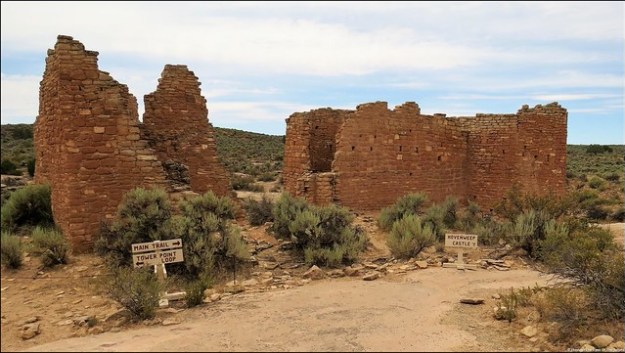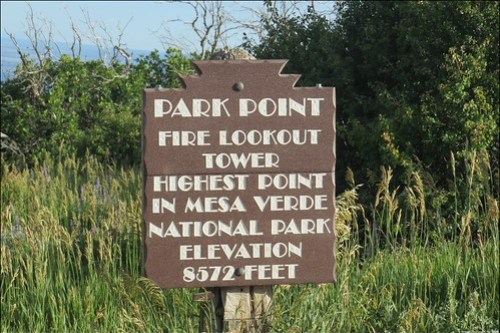After a wonderful time in Rico and Telluride we headed north on the San Juan Skyway to Ridgway State Park. Even though we were going north, we were dropping from 9,000 feet to just under 7,000 feet which meant warmer temperatures. We sure were going to miss the cool temperatures!
Ridgway State Park is located in Ridgway (yes, it doesn’t have an e). Ridgway, Colorado has a population of around 1,000 and an elevation of 6,985. Beginning in 1891 it was a railroad town until part of the rail line was abandoned in 1953 and then completely abandoned due to a reservoir being built. The original location of the dam for the reservoir would have placed Ridgway underwater. A 1975 decision to put the dam further downstream saved the town, earning it the nickname “The Town That Refused to Die”. Ridgway has the only stop light in Ouray County.
The Grammy Awards trophy is handcrafted by Billings Artworks in Ridgway. The trophies are hand cast in an alloy called grammium and then hand filed, ground and polished before being plated in 24k gold.
Ridgway and the surrounding area was the setting for John Wayne’s “True Grit” and “How the West Was Won”. In fact more than 100 films have been made in southwestern Colorado.
Actor Dennis Weaver, from Gunsmoke and McCloud fame had a home in Ridgway and died there in 2006. Weaver was committed to preserving the environment and commissioned an architect to design and build his home from recycled materials such as old automobile tires and discarded cans. The Dennis Weaver Memorial Park in Ridgway is a sixty acre wildlife preserve with several walking trails.
Ridgway State Park has three campgrounds and our campsite was located in the Pa-Co-Chu-Puk section with full hookups.
We stopped by the park’s Visitors Center where they had a large display of animals native to the area. 

The highlight of our stay here was the drive we took on the US Highway 550, also called “The Million Dollar Highway”. I thought it was called this because of the million dollar views but research says the reason is disputed. Some say it is because it took a million dollars to build it in the late 1880’s, while others say it is because the fill dirt contains a million dollars in gold ore. Another idea is that people say you couldn’t pay them a million dollars to drive it during bad winter weather. Regardless of the reason, it is known as one of the most scenic drives in America but is also known as one of the 25 most dangerous roads in America. 
US Highway 550 runs from New Mexico and ends/starts at Montrose Colorado but the most scenic, and dangerous part runs 25 miles between Ouray and Silverton that goes over Red Mountain Pass, elevation 11,018. And that is the part we drove!
The road is cut into the side of a mountain with steep drop offs, narrow lanes, hair pin curves and no guardrails. It takes 100% of the driver’s concentration while passengers hold their breath as they look over the side. Along with 8% grades there are 153 curves! 



We first passed through Ouray, known as the “Switzerland of America” and the “Outdoor Recreation Capital of Colorado”. It is a picturesque mountain town at the base of the San Juan Mountains with one main street and no traffic lights. 



We stopped by Cascade Falls Park with a lovely waterfall. 
Red Mountain Pass at 11,018 feet is one of Colorado’s highest paved passes. 
We saw avalanche signs and could see damage to trees that happened during an avalanche. 

Along the way we saw waterfalls such as Bear Creek Falls, tunnels and evidence of once active mining in the area. 




This area was used by gold and silver miners in the 1870’s. It produced four million ounces of gold, 21 million ounces of silver and twelve million tons of lead, zinc and copper. It helped fuel the industrial revolution and supplied raw materials to support America’s involvement in two World Wars. 



Our turn around point was Silverton, a former silver mining camp. With a population of 630, its main source of income today is tourism, like Ouray. 




We drove a dirt road that took us to a nice spot overlooking the town and the Christ of the Mines Shrine. 

After lunch at a little barbecue restaurant we headed back home. The road wasn’t quite as scary going the other direction, but we still had the hairpin turns and the occasional steep drop offs. It was the lack of guardrails that made it very unsettling.
Another day we drove a short distance from our campsite to the Dallas Divide Summit, elevation 8,970 ft, to take pictures of the mountains. So beautiful! 


One evening we had visitors stop by our campsite. 
Next stop: Black Canyon of the Gunnison National Park
































































































































